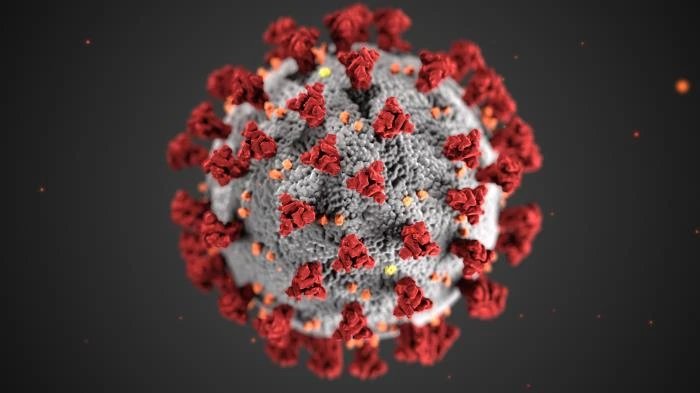


It’s been widely reported that air quality in cities around the world has suddenly improved — but of course, this hasn’t happened in the way anyone would want. A decrease in traffic and commercial and industrial activity due to the COVID-19 pandemic has caused a temporary decrease in pollution. There is a more fundamental connection between air pollution, coronavirus and health, however, and like most things about the virus, this connection is worrisome.
The air pollution and coronavirus connection
COVID-19 is a respiratory illness with complications that include cardiac injury, septic shock, liver dysfunction, acute kidney injury and multi-organ failure. Early analysis indicates that COVID-19 severity and fatalities were dramatically higher among those with heart disease, diabetes and chronic respiratory diseases. The CDC reports that people with serious underlying medical conditions are “at higher risk for severe illness from COVID-19.” Long term exposure to air pollution causes many of these diseases and makes respiratory illnesses more dangerous. Globally, air pollution is estimated to be responsible for nearly 40% of lower respiratory tract infections and chronic obstructive pulmonary disease burden and about 20% of coronary heart disease and diabetes burden. While air quality may have temporarily improved in discrete regions, these health conditions — caused by long term exposure — don’t go away. That is, a few months’ improvement doesn’t make heart disease, diabetes and these other ailments disappear, so the people who have them still face the combination of their conditions and, potentially, COVID-19. The impact of this dangerous combination will not only hit individuals, but could be an additional burden on our already overloaded healthcare system. Many hospitals are already operating near capacity and facing a spike in demand for equipment like ventilators and masks — supplies which are also needed for those with ongoing heart and lung conditions. To make matters worse, the United States Environmental Protection Agency recently announced that it would cut back enforcement of environmental protections during the COVID-19 pandemic.
Not an equal-opportunity problem
Air pollution, of course, varies greatly from place to place. Low wealth communities and communities of color experience a greater burden from pollution because they’re more likely to be situated near or downwind of refineries, ports, highways and other sources of unhealthy emissions. These communities also face disproportionate risk from COVID-19 due in part to lack of access to health care and the significant demand to make ends meet, where stay at home, remote working is not an option. The result is a one-two punch of higher risk of infection and fewer resources for care. Additionally, a new nationwide study shows that U.S. counties that already had high levels of air pollution before the COVID-19 crisis have higher death rates (defined as COVID-19 deaths per total population) — highlighting the importance of continuing to push for reductions in air pollution nationwide during and after the pandemic.
Extreme weather could make the crisis even worse
Finally, there’s the threat of pollution from the upcoming wildfire season adding to the COVID-19 crisis. Scientists have found that changes in weather conditions due to climate change are responsible for much of the increase in wildfires in the U.S. Emissions are now rising in fire-prone areas of the country like the Pacific Northwest due to the increasing frequency and severity of wildfires. Increased particulate matter (PM2.5) from wildfires in the Western U.S. is associated with higher hospital admissions for respiratory problems among the elderly, the same population being disproportionately affected by COVID-19. If we are still dealing with the virus this summer, wildfires could add to the strain on healthcare systems above and beyond the surge due to COVID-19. Wildfires aren’t the only extreme weather event worsened by climate change that can affect air quality and the COVID-19 crisis. Hurricane and flooding seasons are also upon us, and these events can disrupt critical systems necessary for healthcare and increase the burden on hospitals and their staff. They can also cause evacuations and displacement of people from their homes — leading to difficulties in social distancing — and even cause increased hazardous air pollutant emissions, chemical leaks and spills that are dangerous for human health. In 2017, for instance, Hurricane Harvey caused 4,000 tons of unpermitted air pollution from 75 industrial sources in the Houston and Port Arthur areas, including toxic benzene from petrochemical plants in Houston
You’ve probably heard that you should drink water, but how much is enough? Can you drink too much? The information regarding water intake varies, with some suggestions saying you should drink eight glasses of water a day and others suggesting two liters a day for women. If you keep in mind that your body is made up of at least 50% water, you will want to make water your beverage of choice as often as you can. One trick to drink more water is to keep a glass of water by you at all times and use a straw. If you think about it, keeping your body hydrated can only help all of your organs function better. You can read more about that in some of the posts below. One of the side effects of drinking your recommended daily allowance of water is that you look younger and better. To learn all you’ve ever wanted to know about water, check out these 27 blogs.